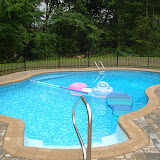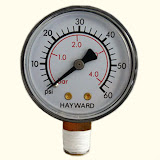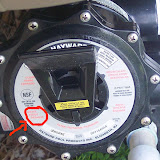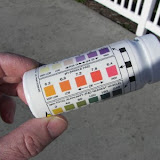As we move closer to pool season many pool owners are hoping to pull off the cover to a clean and clear pool, and cruise right into a fun filled season. Unfortunately most pools are not going to open up in mid season form and will require a little work before they are ready to swim.
Below are Seven Tips for opening your pool this spring
- Open earlier
The earlier you open the pool and get the water circulating the easier your spring opening is going to be. As the temperatures rise and the sun beats down on the un-opened pool, algae blooms start taking hold. Even if you only run the pool for a few hours during the middle of the day using your time clock, it will save you a lot of time and money when it comes to getting the pool ready to swim.
- Super chlorinate and algaecide
We all know we need to shock the pool when we open it up but you also need to add algaecide as well. For in-ground pools I recommend 4-5lbs of granular shock or 4-5 gallons of liquid shock with 1qt. of Mustard Algae Plus copper algaecide for vinyl pools, or 1qt. of Algaecide Plus 60 for Gunite and concrete pools.
The Algaecide will help break-up the algae in the pool by breaking down the shell of the algae allowing the chlorine to then kill it.
What we also need to remember when we shock the pool at this time is that this chlorine is going to be used up fast. We need to keep the chlorine levels elevated for a few days in order for the pool to clear. Shocking your pool consistently with 2 bags a shock a day, and making sure you have chlorine tabs, either in your automatic chlorinator or skimmer basket will help keep the levels high.
- Keep an eye on the pressure gauge
During the first couple of days that your pool is up and running you need to keep a close eye on your filter pressure. With the amount of debris and algae in the pool being filtered out, the filter media will clog a lot faster.
You should note the filter pressure on the gauge when you open the pool, and when the pressure increases 10 psi over that level it is time to backwash the filter or clean the element. If your pool is really green this can take a matter of hours so please make sure you do not leave it unchecked for long.
- Wait to vacuum
When the pool opens up a green mess a lot of pool owner’s first instinct is to grab the vacuum. I encourage you not to be too quick to set up the pool vac. The biggest problem vacuuming a green pool at this stage is that you can not see the bottom of the pool and you do not know what you could be sucking up.
If a pool toy was left in the pool or some form of big debris gets sucked in, it can clog the hose and baskets and make for a frustrating pool cleaning where you are continually starting and stopping the pump to clear out large debris.
What we recommend instead is to shock the pool, let it circulate and wait until you can see the pool bottom.
A good technique for this situation is to super chlorinate the water and brush down the algae off the pool walls, and then shut the pump off over night. What you are trying to do here is let all the debris fall to the bottom of the pool so we have clear water and can actually see what we are vacuuming up.
- Vacuum to waste
One tip we give our customers with a lot of silt like debris in their pool is to utilize a process we call ‘vacing to waste’. This is especially useful in early spring when the rain has left your pool on the verge of over-flowing.
By vacuuming your pool to waste you will save your filter media from being clogged and thus allowing you to vacuum almost your entire pool without having to stop and backwash the filter.
If you have a sand or DE filter you most likely have a multiport valve which has a position called waste. What this setting does is bypass the filter media and directs the water flow from the intake of the valve directly to the backwash without going through your filter. This gives you better suction and saves you from having to clean all that junk out of the element.
Even with an overfilled pool your water level will probably drop below the skimmer and you will have to fill it back up, but with really dirty pools it is worth the small inconvenience.
- Get your water tested and balanced
Once you have super chlorinated and added your initial algaecide dose, let the pool run for 24-48hrs and then get the water tested.
You may think it is not worth testing your water until your pool is clear but that would be a mistake. The acid base balance of your water (PH and Total Alkalinity) directly affects how well your chlorine will work. The effectiveness of available chlorine decreases exponentially the further your acid balance is from optimal range. This can cost you a lot of money in wasted shock if you put off balancing your water properly. Either use your at home test kit or bring a sample bottle to your local pool store, where they will be able to tell you exactly what you need to balance it out.
However, I do not recommend adjusting Calcium Hardness or Cynuaric Acid (chlorine stabilizer) at this point. These chemicals are slow dissolving and in the case of cynauric acid sits in your filter to dissolve. Your pool has enough debris in it at this point, and while you are vacuuming and backwashing often during the first few days you would be wasting these chemicals. Wait until you are clear to adjust hardness and cynuaric acid.
- Jump in!
So it might be late April or early May and the temperature of the water might be a little cool but hey, we opened this pool to have fun didn’t we? You put the work in now its time to enjoy, so go ahead and jump in!
All pools are a little different and if you have specific questions regarding your pool opening ask them in the comments below or email me at [email protected].
Thanks for reading!



Comments are closed.